|
BULB LOG 47 --- 18th November 08
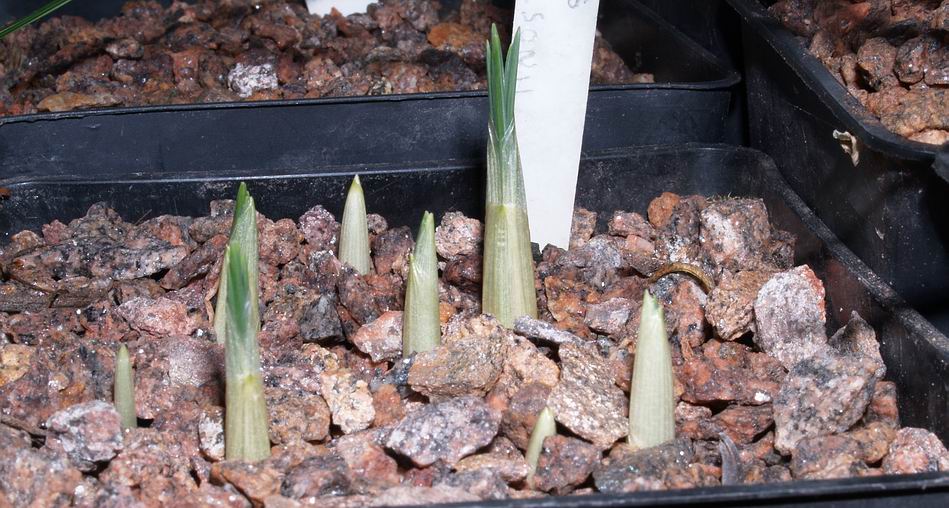
Crocus michelsonii shoots
A few logs back I showed these same shoots just appearing through the gravel - I had hoped that they would stop like that for the winter but they have continued to push up. Crocus michelsonii does flower very early in the year; normally anytime from late January through February but if growth continues these look like they could flower
even sooner than that.
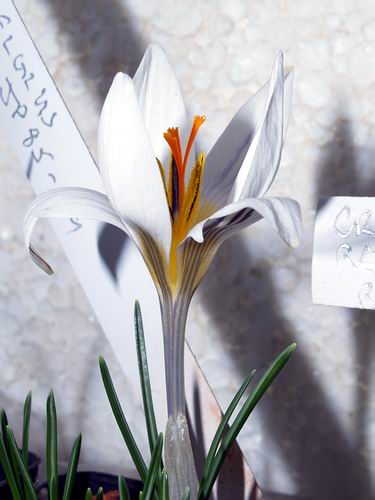
Crocus biflorus melantherus
Most Crocus biflorus wait until spring before they flower but Crocus biflorus melantherus graces us with an early preview of the beauty that this variable species will provide.
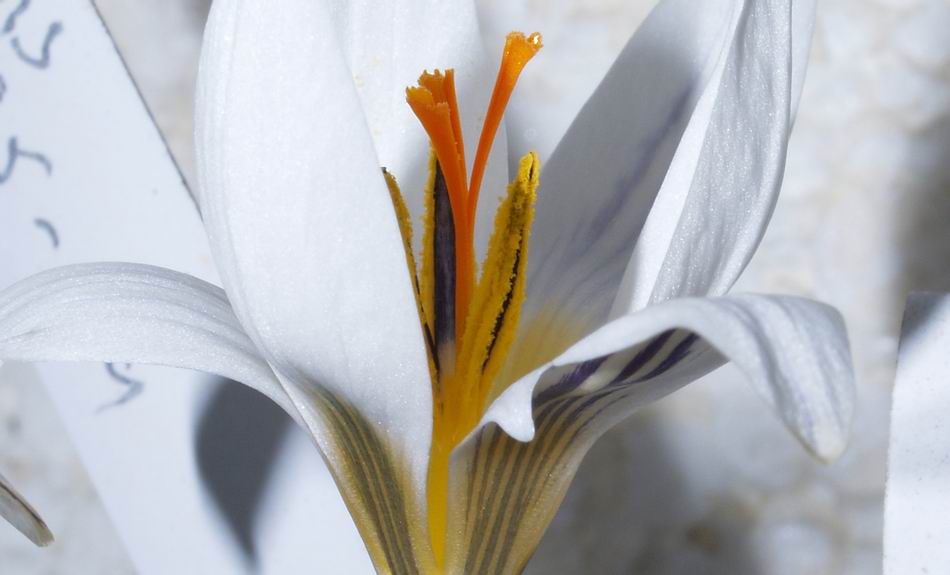
Crocus biflorus melantherus detail
Apart from flowering before the onset of winter Crocus biflorus melantherus is distinguished by the black anthers which turn golden when they split to reveal the pollen.
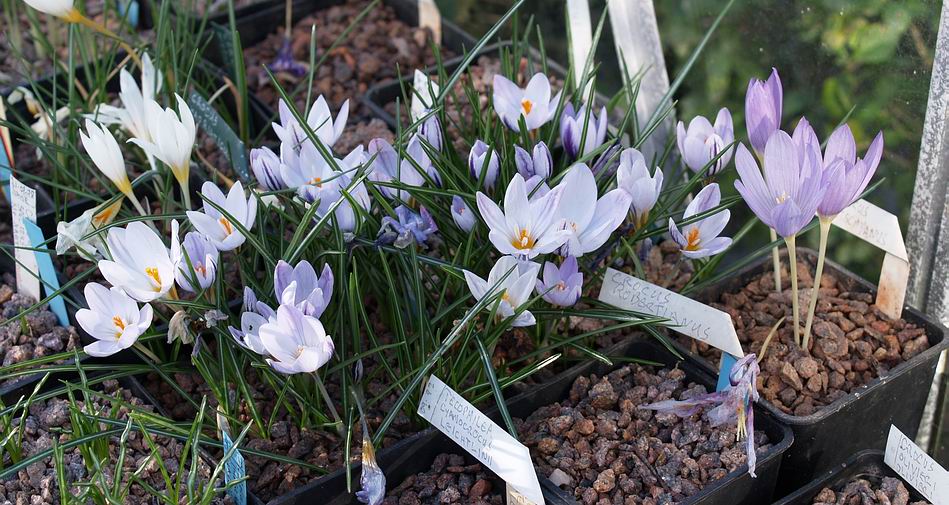
Crocus laevigatus
I make no apologies for showing you yet another picture of Crocus laevigatus. I grow several pots of mixed seedlings which vary in both the markings and the time that they come into flower which in our bulb house can be any time from November right through to until February.
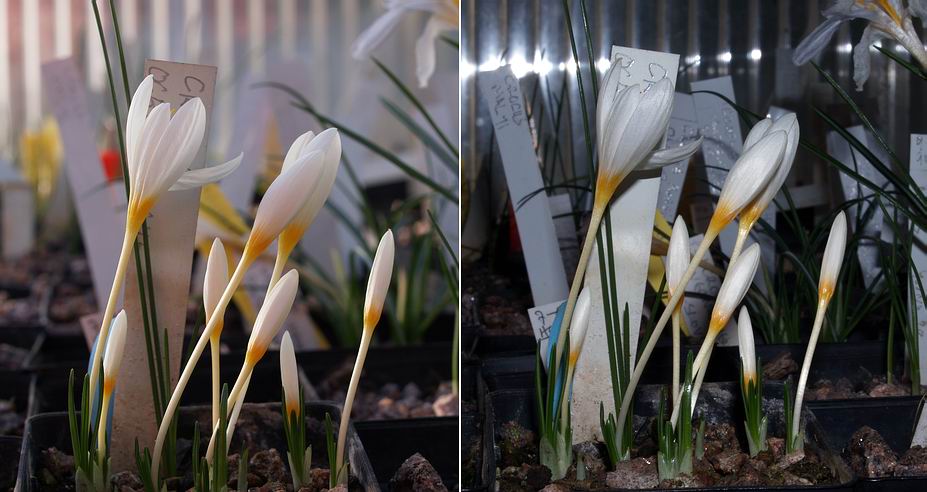
Crocus ochroleucus
In bulb log 45 I showed Crocus ochroleucus albus which lacked the yellow throat of the typical form of Crocus ochroleucus shown above. The picture on the left is taken with natural light and there is a slight yellow cast from the sunshine. I used some fill in flash for the right hand one and captured the actual colour of the white floral segments and gave a much greater depth of field (where you can read the names on many of the labels behind the crocus). These pictures illustrate well that neither picture is better but both provide us with a different view -because the background of the left hand one, taken with natural light, is out of focus it makes the crocus flowers stand out better.

Crocus niveus
Because of the low light I have used flash for most of the crocus pictures in this week's bulb log. Most of our Crocus niveus flowered a few weeks ago but this one is always a bit later - it is also shorter and has a good yellow tube to the flower.

Crocus niveus from above
I have often put a question mark on this label to check out and verify the name of this plant as they also have a slightly different shape to the other forms we grow - here it is looking down into the flowers. I was very interested to see Arthur Nicholls lovely Crocus pictures in the forum from his recent trip to Greece which also show a wide variation in Crocus niveus. So often in cultivation we are used to a very narrow sample of the variation that can be found in a species in the wild so that when we are presented with some of those different forms we are confused. If you have not seen the Crocus pages in the forum you should go immediately (well, after you have finished reading the bulb log!) and have a look at the wonderful pictures of Crocus both in the wild in Greece, Turkey et al and in cultivation.
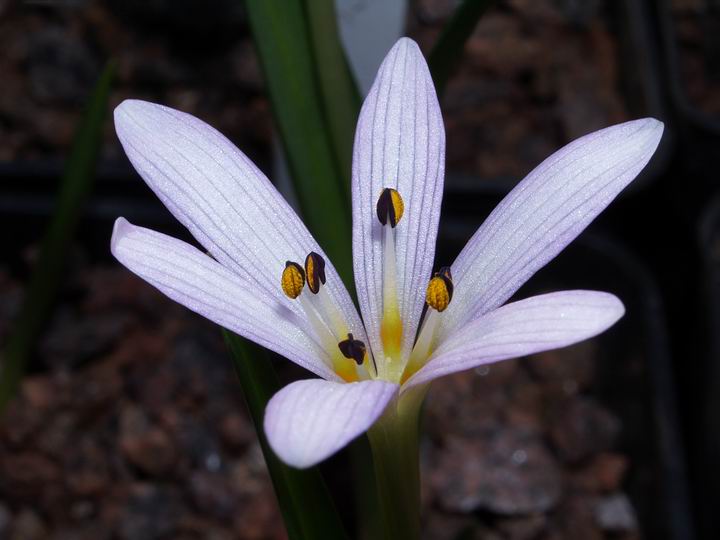
Colchicum cupanii
It is good to show close up pictures like this to let you enjoy the fabulous details that make up the flower of Colchicum cupanii but unless you are familiar with the plant you have no idea what size these flowers actually are.
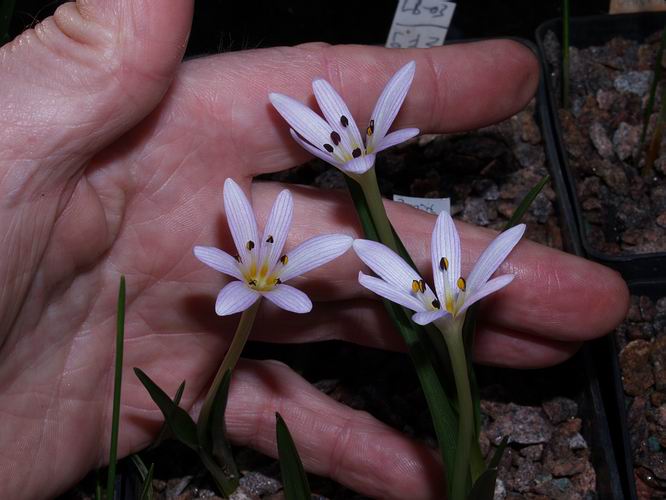
Colchicum cupanii scale
I placed my hand into this picture to give you the scale of this charming small Colchicum cupanii - it is such a delight.
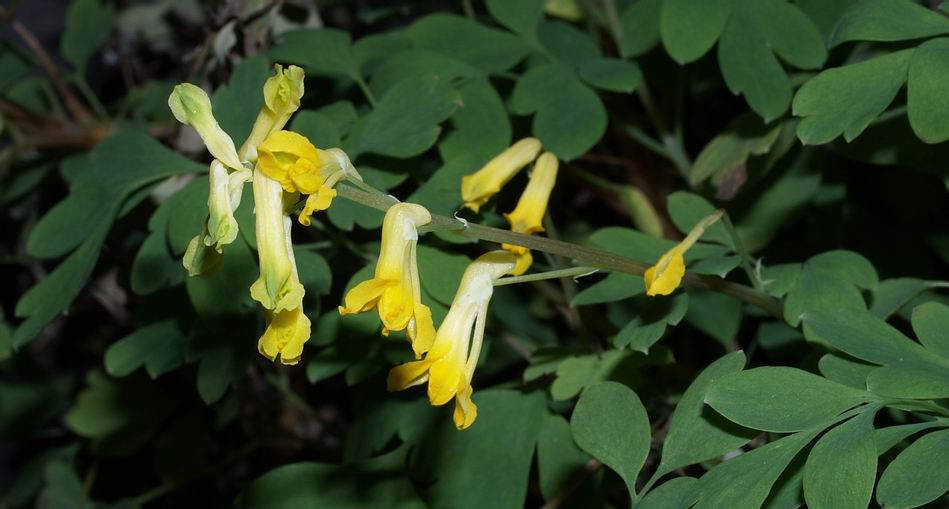
Pseudofumaria lutea
Pseudofumaria lutea is a great value plant because once you have it and allow it to seed you will never again be without it. It seeds around in our gravel paths and edges around the walls at the front of our house and all we need to do is to pull out the ones that put themselves where they are not allowed to be.
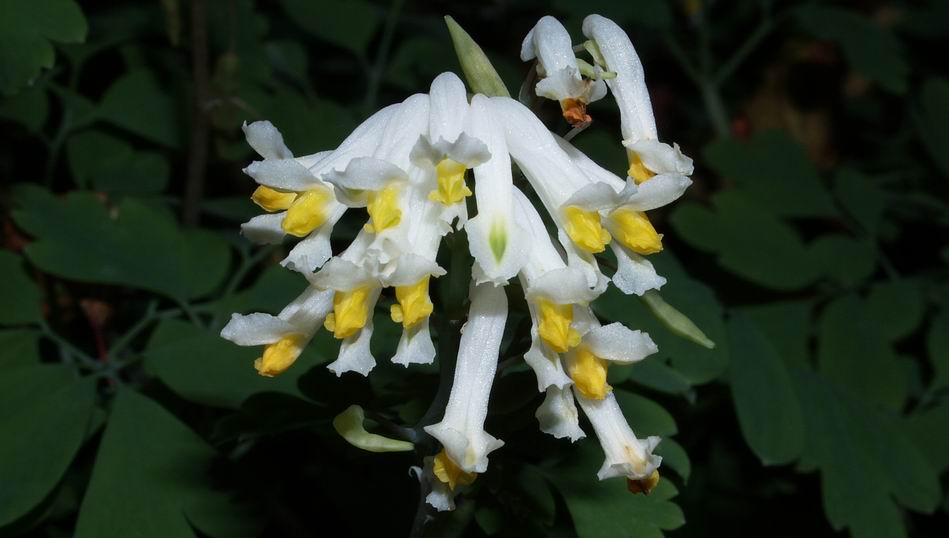
Pseudofumaria alba
In the back garden Pseudofumaria alba does the same and both of these species can be in flower at almost any time of the year only being cut down when we get severe frosts. You may know and call these two species Corydalis lutea and C. ochroleuca but they have been reclassified and placed into this new genus and you can read all about them and their close relatives in a recently published book.
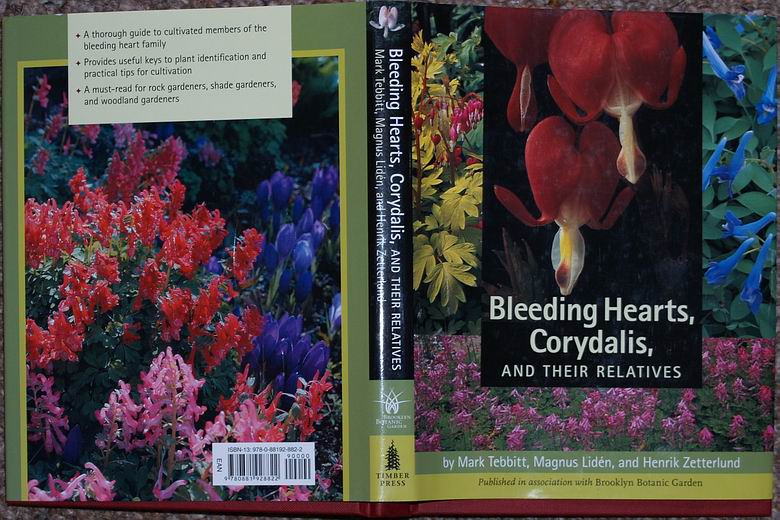
Bleeding Hearts Book
Published this year by Timber Press; Bleeding Hearts, Corydalis and their Relatives is the first book that I know of to cover this increasingly popular family of garden worthy plants.

Zetterlund Tebbitt Liden
The authors will be familiar to many of you and here is their picture from the inside of the back cover.
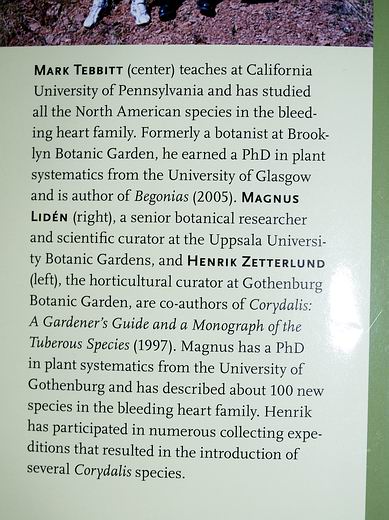
The Authors
Henrik Zetterlund of Göteborg is a regular and popular speaker who has been to Scotland many times; Magnus Lidén now of Uppsala, is booked to be one of the speakers at the SRGC Discussion Weekend in 2nd,3rd and 4th October 2009 and I see that Mark Tebbitt also has strong links to Scotland. These three authors bring together their considerable knowledge of these plants and present it to us in a very useful book that is aimed at the general and the serious gardener.

Contents pages
The contents pages show how the book introduces us to the cultivation and natural history of these plants before going on to look at each genus in turn. The cultivation section deals with the different conditions, such as alpine house, trough, woodland garden, general mixed borders preferred by these plants, showing no matter where you garden you should find some suitable species to enjoy.
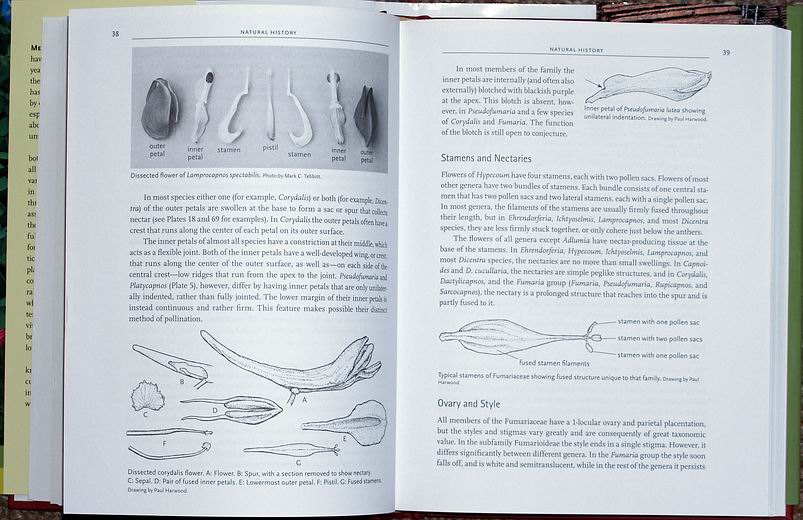
Detailed pictures and drawings
The natural history section also deals with the morphology and illustrates just how fascinating and complex some of the flower structures are - it is well worth pulling one of the flowers apart some time. Distribution, habitats and pollination are all touched on in this section.

Dicentra
The bulk of the book deals with each genus in turn bringing us up to date with the latest names for these plants as there have been a number of major changes at both the genus and species level. We are not just told the new name but also the reason behind the change which helps when a name very familiar to gardeners is suddenly replaced by a new one. I really enjoyed reading the section on Dicentra as we have grown a number of them for many years without fully understanding exactly what species they were - now I know that some that confused me were hybrids involving Dicentra eximia and D. formosa. We have also grown some of the climbing dicentras from collected seeds such as the now named Dactylicapnos macrocapnos.
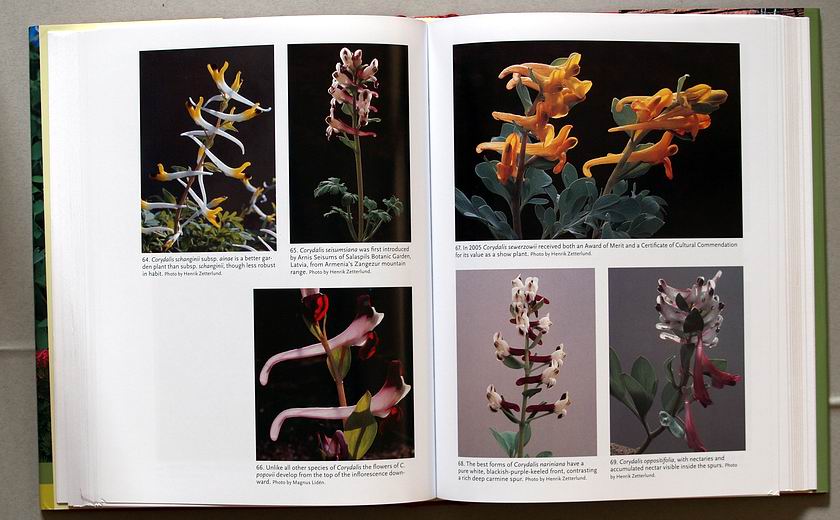
Well illustrated
The book is well illustrated with 112 colour pictures which, much to my disappointment, are in a separate section towards the centre of the book. I know that it is a cost reducing measure that makes publishers group the pictures in this way but I would much prefer the colour pictures to be included in the text at the appropriate place so that I do not have to flick back and forward between the text and the picture it refers to.

Bright coloured Corydalis
For me it is the Corydalis that are the stars of this family coming in all the colours of the rainbow and they must provide some of the most decorative plants to bring colour into the early spring gardens that exist. Again all the latest nomenclature is included here with detailed descriptions of the species and suggestions as to how to grow them. I did wonder if this book would be just duplicating the information I already have in my much read previous book 'Corydalis' by Lidén and Zetterlund but I find that it complements it, introducing me to the name changes and the wider family that includes the corydalis.

Blue Corydalis
I have to own up to an interest as among the blue corydalis cultivars: the authors recommend is my own Corydalis 'Craigton Blue' a hybrid between what I knew as C. elata (but now know correctly as C. omeina thanks to this book) and C. flexuosa.
For me this book manages to bridge the gap and should appeal to both the general gardener looking for different and unusual plants to grow and the more serious plants people with a serious interest and I can recommend that you add it to your bookshelf.
^ back to the top ^
|

